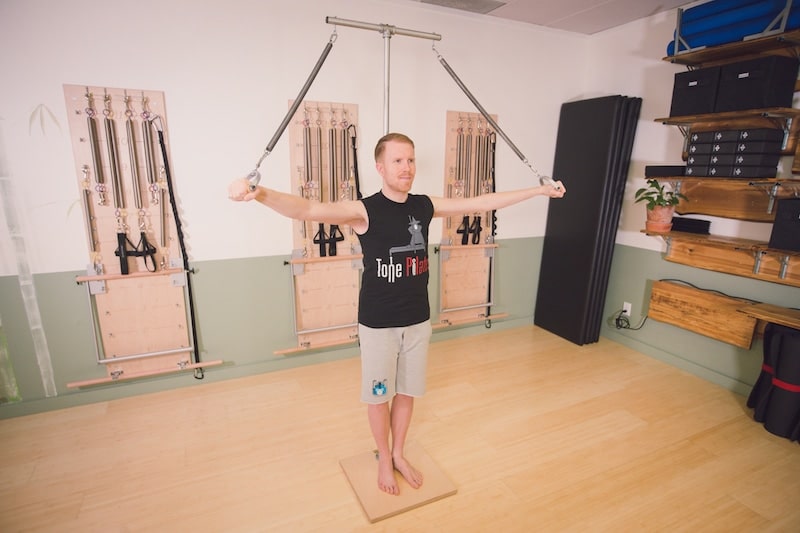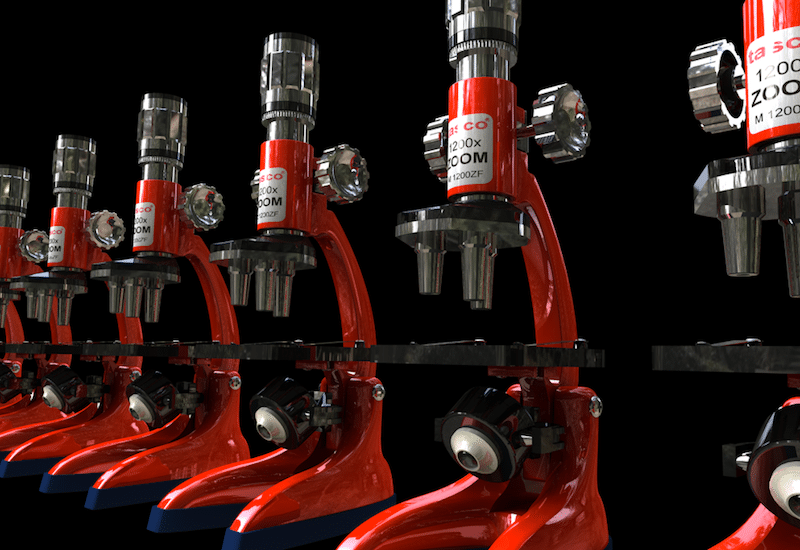The Science on Pilates: How Effective is Pilates?

by Gail D. Low, M.A.
Introduction
The Pilates exercise system is becoming increasingly popular as a method for both rehabilitation after injury and improving fitness, but does it work? While the number and quality of scientific studies on the effectiveness of Pilates have been limited in the past, over the last 6-7 years more research has been done to investigate whether Pilates has the benefits that are often claimed. This article will explore this growing body of scientific evidence on the Pilates method in detail. From the high-quality studies cited, there is emerging evidence that Pilates is effective in reducing pain, improving functional movement 1, 2, 3, improving posture 4, strengthening posterior trunk muscles, and reducing the degree of non-structural scoliosis in people with the condition 5. Studies with older adults also show that Pilates can improve balance 6,7, muscle strength, gait, walking performance and quality of life for the older generation 8. Overall, scientific evidence is starting to show that Pilates does indeed have tangible, measurable benefits for its practitioners.
Development of Pilates

At the time of Joseph Pilates’ death in 1967, the world of dance in America had embraced Pilates’ methods, and studios using his exercise system had sprung up to cater to this clientele. While originally practiced extensively by dancers and athletes, today, Pilates has moved to more mainstream use by the general public for overall fitness and rehabilitation. 9
Joseph Pilates designed an exercise system focused on mixing philosophical ideas with the concepts and functional movement styles of martial arts, yoga, gymnastics, and dance. Current Pilates’ principles have been fine-tuned to bring them in line with our modern-day understanding of kinesiology, applied anatomy, and physiology. In every Pilates exercise, close attention is paid to the details of each movement, as opposed to highlighting mere repetition. Careful attention is also paid to breathing (see post: How to Breathe the Pilates Way), which is a crucial element in Pilates: heightening one’s awareness of breath, enhancing one’s focus on using the centre of the body, and increasing the inhalation of oxygen. Centering the body to allow for control and economy of movement, focusing on robust and deep breathing, and concentrating are all vital aspects of the Pilates method. By attending to precise detail and breath, pain and strain are avoided, and flow of movement is encouraged. 9
One strength of the Pilates system is the varied abdominal exercises contained in each session. The core muscles (see post: The Role of Your Abdominals in Everyday Life) are challenged in various ways with the aim of improving strength and endurance. 10 A well-founded modern interpretation of the Pilates method can be safely used for people of differing levels of fitness and age (including older adults), with needs ranging from post-trauma rehabilitation to general improvement in fitness. Modern-day Pilates can also be expanded to include the needs of elite athletes and dancers in fine-tuning their bodies. 9
Evidence for the Effectiveness of Pilates in Adults

Advocates of the Pilates exercise system often tout its benefits, but what does science have to say about the tangible benefits of Pilates? While high-quality research on the effectiveness of Pilates has been limited in the past 10, over the past 6-7 years a growing body of scientific literature has started to provide evidence that Pilates can reduce pain, improve functional movement, improve posture, fine-tune trunk flexibility and lower limb muscle pain, increase flexibility, and help reduce the degree of non-structural scoliosis in people with the condition.
Pain Reduction, Posture and Functional Improvement
A recent systematic review of studies, published between 2005 and 2016, examined the effectiveness of Pilates in the rehabilitation of various conditions (e.g., lower back pain, chronic neck pain). 1 Most of the studies assessed (19 of 23) found that participants who practiced Pilates reported greater benefits (including reduced levels of both pain and disability) when compared with participants in comparison or control groups. In most of the assessed clinical trials (which were rated as reasonably well for study quality) within the past 5 years (2013-2018), Pilates was found to be an effective tool in reducing pain and disability.
Similarly, an earlier review of systematic reviews published between 2008 and 2014 found that while two studies were inconclusive, most of the assessed studies that focused on connective tissue and the musculoskeletal system (5 of 7) reported short-term functional improvement and relief from pain with Pilates-based exercise for the young- to middle-aged women who participated. 2
A 2015 clinical trial involving 60 patients diagnosed with chronic low back pain (47 women, 13 men, ranging from 18-50 years) showed that Pilates had a significant effect in reducing pain, and increasing function and quality of life for the low-back pain patients. 3 The patients were randomly assigned to receive either 55-min Pilates exercise twice per week for 90 days, plus a non-steroidal anti-inflammatory drug [NSAID] (experimental group), or medical treatment using NSAIDs only (control group). Patients were assessed four times for pain, function, quality of life, satisfaction with treatment, and NSAID intake. While no significant differences were found for satisfaction with treatment, patients in the Pilates group reported reduced pain, increased function and increased quality of life. Furthermore, patients in the Pilates group gradually reduced NSAID use beyond the initial 90-day treatment period, for a further 90 days. 3
A similar 2016 clinical trial involving 101 post-menopausal women with chronic low back pain showed that Pilates had a significant effect on reducing pain and disability. 11 The women were randomly assigned to either receive Pilates and physical therapy (experimental group) or physical therapy only (control group). When pain and disability were assessed before treatment, after 6 weeks, and after 1 year, the women in the Pilates group showed significant improvements with pain and disability compared to the control group both at 6 weeks and 1 year. Furthermore, at the 1-year follow-up, only the Pilates group showed significantly better results in comparison to baseline. 11
A smaller 2016 trial of 38 participants, all diagnosed with non-specific lower back pain for over 12 months, showed that Pilates significantly improved posture and reduced pain levels. 4 Participants were randomly assigned to receive either a 50-min Pilates mat class (twice per week for 14 weeks) without use of NSAIDs (experimental group), or no active supervision, usual treatment, and use of NSAIDs (control group). Measures of posture and disability were evaluated before the trial and at 14 weeks, when the Pilates program concluded. Participants in the Pilates group showed significant improvements over the 14-week study period for all measures of posture, whereas there were no differences in improvement for the control group. Although both groups of participants experienced a reduction in pain from baseline to 14 weeks, those in the Pilates group experienced a significantly greater reduction in pain levels. 4
Overall, these recent studies and clinical trials provide evidence that the Pilates exercise system can benefit a wide range of practitioners who are seeking reduced low back pain, improved posture, and increased functional movement.
Trunk Flexibility and Lower Limb Muscle Strength
A 2015 study found support for improved trunk flexibility and lower limb muscle strength in a sample of 125 community-dwelling women, who ranged in age from 26 to 55 years. 12 Based on their personal preference, participants were assigned to receive either Pilates exercise mat training for 60 minutes, twice weekly for 12 weeks (experimental group) or no specific exercise intervention (control group). Data were collected only from the 96 participants with an attendance rate at or above 67%. At the beginning of the study, there were no significant differences between the two groups; however, at the 12-weeks, post-Pilates intervention, participants in the experimental Pilates group had significantly improved their trunk flexibility and lower limb muscle strength compared to participants in the control group. 12 While this is only one study, it lends supporting evidence that Pilates can help improve trunk flexibility and lower limb muscle strength.
Flexibility, Pain, and Non-Structural Scoliosis
Improved flexibility, reduced pain, and a reduction in the degree of non-structural scoliosis were found in a 2012 study of the effectiveness of Pilates-based therapy with 31 sedentary female college students suffering from non-structural scoliosis. 5 Students were randomly assigned to receive either 60-minute Pilates sessions, twice weekly for 3 months (experimental group) or no therapeutic intervention (control group). The study authors found that Pilates exercises significantly increased flexibility of the group of muscles in the posterior of the body (posterior muscular chain), reduced spinal pain, and decreased the degree of scoliosis. 5 Again, while this is just one study, the results described provide evidence that Pilates can be used to effectively reduce the degree of non-structural scoliosis, as well as to reduce spinal pain and increase flexibility on the posterior muscular chain.
Evidence for the Effectiveness of Pilates with Older Adults

Due to the low-impact nature of Pilates exercises, the Pilates method is often recommended for older adults; however, to date there has been very little research to provide evidence of measurable benefits of Pilates for the older generation. Thankfully, there have been a flurry of recent studies that have investigated whether Pilates can be beneficial for older people, and evidence is starting to emerge to show that for older adults especially, Pilates can improve muscle strength, balance, gait, quality of life and flexibility: great news for older folks!
Muscle Strength, Balance, Gait, and Quality of Life
A 2015 review of ten different studies to determine the effectiveness of Pilates for older adults (60-80 years) found that these studies provide evidence that Pilates had large effect sizes (ES) for improved muscle strength (ES = 1.23), improved gait and walking behaviours (ES = 1.39), improved quality of life and a positive effect for activities of daily living and mood (ES = 0.94). Pilates also had a moderate to high effect on dynamic balance (ES = 0.77). The review authors conclude that Pilates exercise training should be considered as a method of improving the quality of life in older adults, due to improved physical fitness, mood states, and fall prevention. 8
In a 2015 review of clinical trials assessing the effectiveness of Pilates on falls and/or balance in older adults, the authors noted that existing evidence shows Pilates to be effective in improving balance, an important determinant of falls in older adults. 6 However, the authors caution that the current available data are limited regarding the impact of Pilates exercise on falls, and they suggest that greater effects may have been obtained had best-practice recommendations been implemented in earlier studies. 6
In a cross-over trial of 32 healthy community-dwelling older men and women (> 60 years of age) 13, significant improvements in static and dynamic balance were seen for the 27 participants who fully completed a 5-week Pilates program. The 32 participants were randomly assigned to either a 5-week program of 60-min Pilates classes twice weekly, plus one in-home Pilates practice weekly (experimental group) or their usual activity (control group). Six weeks after completion of the first trial component, participants completed the alternate intervention (the cross-over). In a follow-up study 12 months later, 7 30 of the initial participants were retested: 14 participants had continued with Pilates classes and 16 had not. The researchers reported that significant improvements in static and dynamic balance measures were maintained for the entire group from before the study to the 12-month follow-up, with increased benefits for ongoing Pilates participants. Evidently, Pilates has benefits for older adults that include improved static and dynamic balance, both in the short- and medium-term (up to 1 year).
Flexibility
Pilates has also been shown to improve flexibility in older women. In a 2016 trial comparing the effectiveness of Pilates with that of static stretching with 32 healthy women (60 to 65 years old), the study showed significant improvements in flexibility after doing Pilates exercise for 60 minutes, twice per week for 3 months. 14 Participants were randomly assigned to either the Pilates intervention described above (experimental group), or a traditional static stretching intervention group (control group, which like the experimental group, consisted of 60-minute stretching sessions twice per week for 3 months). All the women completed the study and participated in at least 80% of the sessions. A physiotherapist conducted evaluations for flexion and extension of the trunk, flexion of the hip, and plantar and dorsiflexion of the ankle. The physiotherapist did not know which group each participant was in (experimental or control), and the evaluations were conducted both before and after the 3 months of exercise sessions. After the 3-month exercise period ended, the women in the Pilates group showed significant improvements in all flexibility movements, while the women in the static stretching group improved for only trunk and hip flexion. However, over time, the differences between the groups only lasted for trunk extension, with the Pilates intervention demonstrating superior flexibility. 14
Overall, these studies provide evidence that Pilates has a range of benefits for older adults, including improved muscle strength, balance, gait, quality of life and flexibility. It is also possible that Pilates can contribute to reducing the frequency of falls in older people, although more solid research needs to be conducted.
Conclusion
Emerging scientific evidence confirms that Pilates can offer significant benefits to adults of all ages, including reduction in pain and improvement in flexibility, muscle strength, posture, gait, balance, range of motion, and quality of life. Thus, those who advocate for Pilates as an exercise system now have some solid scientific evidence that Pilates really does have measurable, tangible benefits.
References
1. Byrnes, K., Wu, P.-J., & Whillier, S. (2018). Is Pilates an effective rehabilitation tool? A systematic review. Journal of Bodywork & Movement Therapies, 22, 192-202.
2. Kamioka, H., Tsutani, K., Katsumata, Y., Yoshizaki, T., Okuizumi, H., Okada, S., et al. (2016). Effectiveness of Pilates exercise: A quality evaluation and summary of systematic reviews based on randomized controlled trials. Complementary Therapies in Medicine, 25, 1-19.
3. Natour, J., Cazotti, L. de A., Ribeiro, L. H., Baptista, A. S., & Jones, A. (2015). Pilates improves pain, function and quality of life in patients with chronic low back pain: a randomized controlled trial. Clinical Rehabilitation, 29, 59-68.
4. Patti, A., Bianco, A., Paoli, A., Messina, G., Montalto, M. A., Bellafiore, M., et al. (2016). Pain perception and stabilometric parameters in people with chronic low back pain after a Pilates exercise program. Medicine, 95, 1-7.
5. Alves de Araujo, M. E., Bezerra da Silva, E., Bragade Mello, D., Cader, S. A., Shiguemi Inoue Salgado, A., & Dantas, E. H. M. (2012). The effectiveness of the Pilates method: Reducing the degree of non-structural scoliosis, and improving flexibility and pain in female college students. Journal of Bodywork & Movement Therapies, 16, 191-198.
6. Barker, A. L., Bird, M.-L., & Talevski, J. (2015). Effects of Pilates for improving balance in older adults: A systematic review with meta-analysis. Archives of Physical Medicine and Rehabilitation 96, 715-723.
7. Bird, M.-L., & Fell, J. (2014). Positive long-term effects of Pilates exercise on the age-related decline in balance and strength in older, community-dwelling men and women. Journal of Aging and Physical Activity 22, 342-347.
8. Bullo, V., Bergamin, M., Gobbo, S., Sieverdes, J. C., Zaccaria, M., Neunhaeuserer, D., & Ermolao, A. (2015). The effects of Pilates exercise training on physical fitness and wellbeing in the elderly: A systematic review for future exercise prescription. Preventive Medicine, 75, 1-11.
9. Latey, P. (2001). The Pilates method: history and philosophy. Journal of Bodywork and Movement Therapies, 5, 275-282.
10. Kloubec, J. (2011). Pilates: how does it work and who needs it? Muscle, Ligaments and Tendons Journal, 1, 61-66.
11. Cruz-Díaz, D., Martínez-Amat, A., Osuna-Pérez, M. C., De la Torre-Cruz, M. J., & Hita-Contreras, F. (2016). Short- and long-term effects of a six-week clinical Pilates program in addition to physical therapy on postmenopausal women with chronic low back pain: a randomized controlled trial. Disability and Rehabilitation, 38, 1300-1308.
12. Kao, Y.-H., Liou, T.-H., Huang, Y.-C., Tsai, Y.-W., Wang, K.-M. (2015). Effects of a 12-week Pilates course on lower limb muscle strength and trunk flexibility in women living in the community. Health Care for Women International, 36, 303-319.
13. Bird, M.-L., Hill, K. D., & Fell, J. W. (2012). A randomized controlled study investigating static and dynamic balance in older adults after training with Pilates. Archives of Physical Medicine and Rehabilitation, 93, 43-49.
14. Oliveira, L. C., Oliveira, R. G., & Pires-Oliveira, D. A. A. (2016). Comparison between static stretching and the Pilates method on the flexibility of older women. Journal of Bodywork & Movement Therapies, 20, 800-806.
